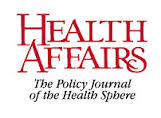PHC4 Reports on Hospital Mortality, Admission Rates, and Performance
Mortality rates, admission rates, and other aspects of hospital performance are the subject of a new report by the Pennsylvania Health Care Cost Containment Commission.
 The report presents information on hospital volume and outcomes for 17 different medical conditions and surgical procedures from October 2017 through September 2018. It also compares hospital performance over the five-year period from 2013 through 2018 on an aggregate state-wide basis and for individual hospitals.
The report presents information on hospital volume and outcomes for 17 different medical conditions and surgical procedures from October 2017 through September 2018. It also compares hospital performance over the five-year period from 2013 through 2018 on an aggregate state-wide basis and for individual hospitals.
Overall, the report found decreases in hospital mortality for most of the 17 conditions, with respiratory failure, sepsis, colorectal procedures, and intestinal obstructions experiencing the biggest decreases (by percentage). Hospital admissions for chest pain, chronic obstructive pulmonary disease, and pneumonia experienced the biggest declines while admissions for respiratory failure and sepsis experienced significant increases (in numbers).
For state-wide and hospital-specific data on hospital performance on 17 medical conditions and procedures, see the new PHC4 documents that together constitute its Hospital Performance Report 2018.
 Pennsylvania rates will rise an average of four percent for individual plans and 9.7 percent for small groups, the state Insurance Department has announced. All insurers that offered plans in 2019 will do so again in 2020 and the exchange will include a new insurer and increased choice in some of the state’s 67 counties. Beginning in 2020, residents of only six counties will have only a single insurer offering individual plans.
Pennsylvania rates will rise an average of four percent for individual plans and 9.7 percent for small groups, the state Insurance Department has announced. All insurers that offered plans in 2019 will do so again in 2020 and the exchange will include a new insurer and increased choice in some of the state’s 67 counties. Beginning in 2020, residents of only six counties will have only a single insurer offering individual plans. The decline results, according to the news release, from a combination of prevention, rescue, and treatment. These and efforts, including the distribution of free naloxone, a drug that helps rescue those who have overdosed on some drugs, have been funded in part by a grant from the U.S. Substance Abuse and Mental Health Services Administration and Pennsylvania’s own Substance Use Disorder Loan Repayment Program, which assists health care professionals who work in the behavioral health field with the cost of their education.
The decline results, according to the news release, from a combination of prevention, rescue, and treatment. These and efforts, including the distribution of free naloxone, a drug that helps rescue those who have overdosed on some drugs, have been funded in part by a grant from the U.S. Substance Abuse and Mental Health Services Administration and Pennsylvania’s own Substance Use Disorder Loan Repayment Program, which assists health care professionals who work in the behavioral health field with the cost of their education. According to a new study published in the journal Health Affairs, Medicaid and CHIP enrollment among low-income families employed full-time by large companies rose from 45 percent to 69 percent between 2008 and 2016. The driving force behind this growing reliance on public insurance appears to be the shift of health insurance costs from companies to employees: employee share of health insurance premiums rose 57 percent during that same period, leaving many families unable to afford even employer-subsidized health insurance.
According to a new study published in the journal Health Affairs, Medicaid and CHIP enrollment among low-income families employed full-time by large companies rose from 45 percent to 69 percent between 2008 and 2016. The driving force behind this growing reliance on public insurance appears to be the shift of health insurance costs from companies to employees: employee share of health insurance premiums rose 57 percent during that same period, leaving many families unable to afford even employer-subsidized health insurance. The resolution to conduct the study was approved unanimously by the state House, and according to a news release from state representative Jeanne McNeill, who sponsored the resolution,
The resolution to conduct the study was approved unanimously by the state House, and according to a news release from state representative Jeanne McNeill, who sponsored the resolution, The following is MACPAC’s own summary of the sessions.
The following is MACPAC’s own summary of the sessions. According to a Pennsylvania Department of Health news release,
According to a Pennsylvania Department of Health news release,